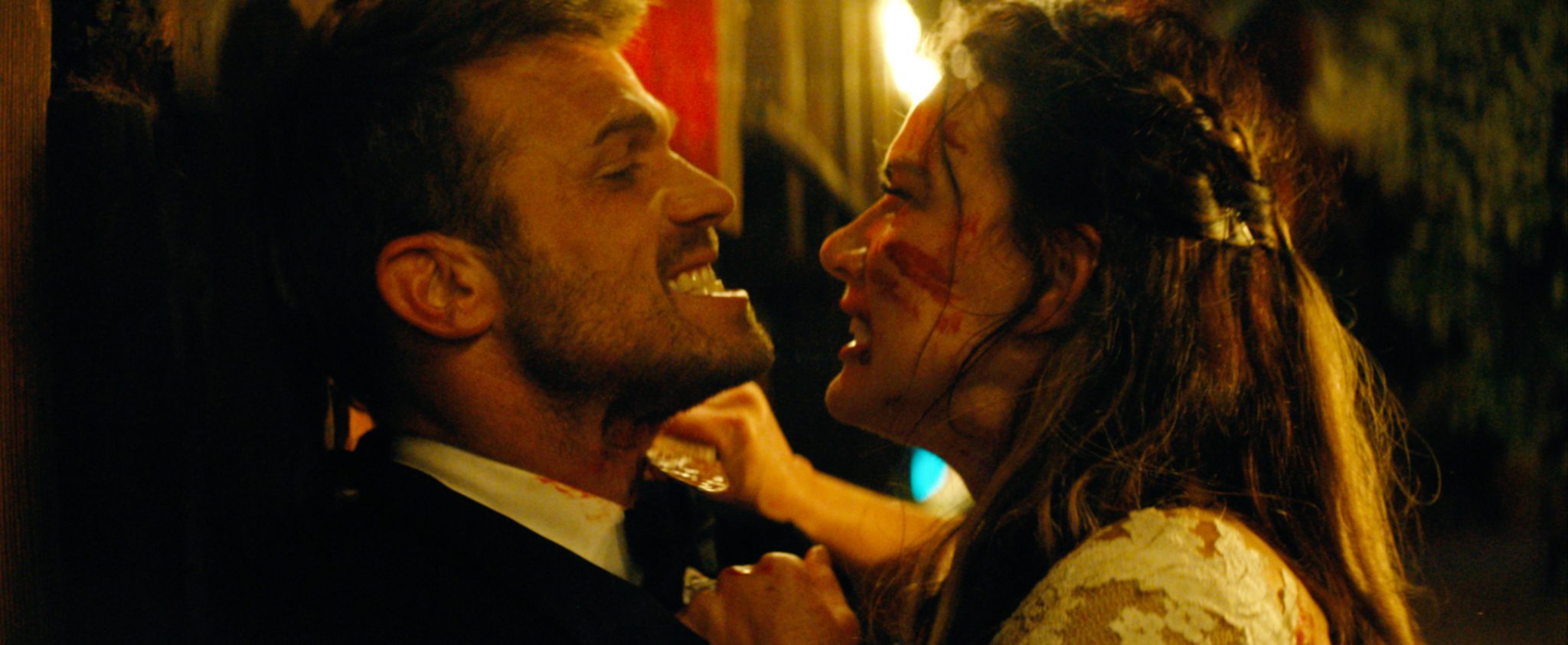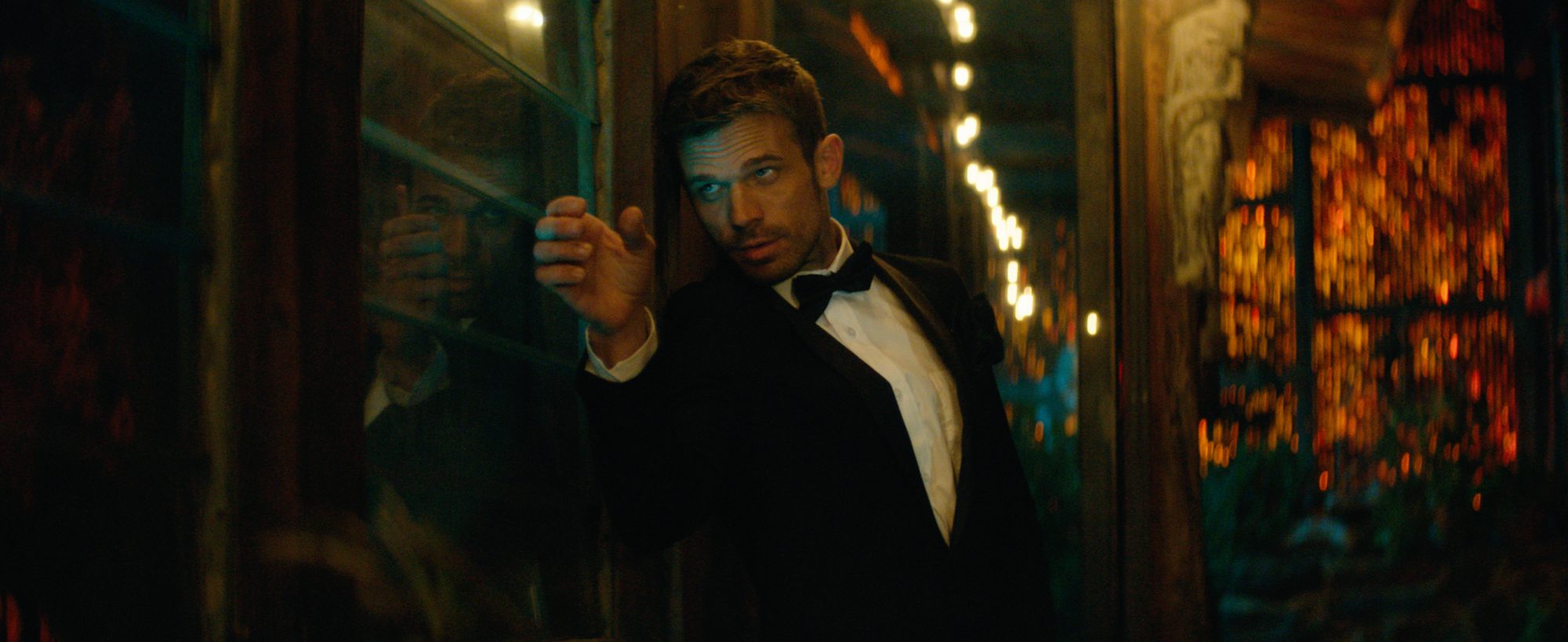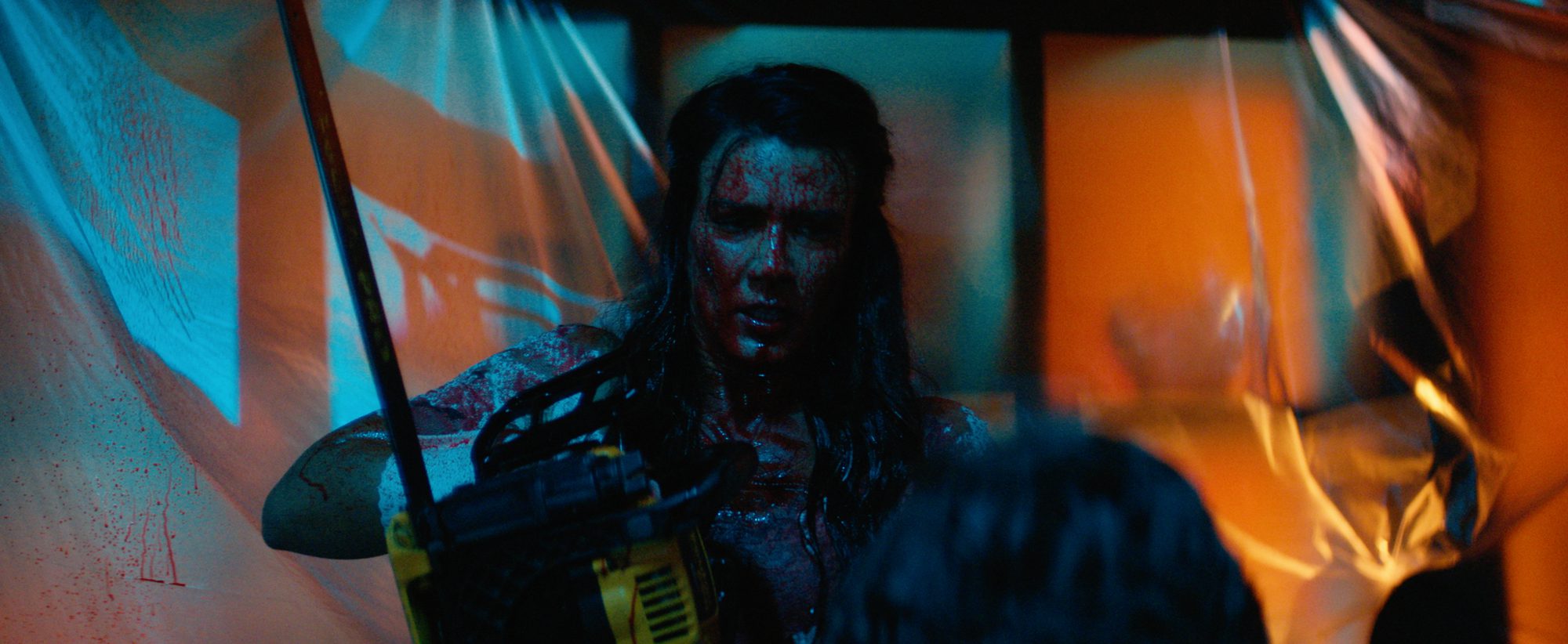
To paraphrase Shakespeare, hell hath no fury like a groom abandoned.
Set primarily in the aftermath of a wedding-gone-wrong, Til Death Do Us Part follows the Bride (Natalie Burn), a woman who flees her wedding in a flash. However, when her Husband refuses to accept her disappearance, he responds by sending his groomsmen to retrieve his beloved. Determined to reclaim her freedom, a bloody battle begins as the Bride attempts to escape the clutches of the oncoming attack.
Directed by Timothy Woodward Jr., Til Death Do Us Part is a fun little actioner that moves along quickly and never overstays its welcome. While performances by side characters are entertaining, the strongest work comes from the Bride herself. As the bruised and brutal Bride, Burn throws herself into the action with enthusiasm. Whether she’s flipping over beds or throwing books, Burn commits to the scene, revealing her character’s resourcefulness with fun and fury.
And these scenes are absolutely the adrenaline rush that Woodward wants to fuel the film. Clearly inspired by the world of John Wick and Tarantino‘s pop-infused chaos, Til Death keeps the audience engaged with an increasingly wild barrage of action scenes. In these moments, one can see that Woodward is in his element. In each unique environment, he and his team choreography scenes that fit the world they’re in. As the Bride breaks bones, the film is at its most fun, keeping the audience engaged with fun and fury.
At the same time, Woodward wants to Til Death to incorporate an element of mystery. In order to accomplish this, he blurs the lines within his own story by telling two seemingly conflicting narratives at the same time. In one story, the viewer watches as the Bride attempts to free herself from the Husband’s groomsman. In the other, we see the couple embark on their honeymoon in the Caribbean together. By cutting between timelines, Woodward allows the narrative to unfold in its own unique pacing, leaving the viewer unsure how each story connects with one another. While this interplay can be a little jarring at times, patient viewers will likely be satisfied by the way that Woodward brings them together by the end.

Unfortunately, Til Death struggles when the action isn’t driving the film. Written by Chad Law and Shane Dax Taylor, the script often takes its interesting premise and struggles when the emphasis is put on the dialogue. Veterans like Orlando Jones and Jason Patric and a wonderful weird Cam Gigandet make the most of what they’re given but, unfortunately, the dialogue doesn’t always elevate the material. To compare it once again to Wick, Reeves spends most of the films without speaking in order to keep the stunt work front and centre. (Quite literally, his ‘fists do the talking’.) Even though the end result is often frenetic and fun, this sort of approach would have benefitted Til Death greatly.
Underneath the violence, Til Death uses its premise to explore the life and death of a relationship at the same time. Without giving away any spoilers, the film isolates the moments that marriages can spark with romance or, just as easily, have that flame doused by reality. For the Bride and Groom, their partnership is built on mutual vision—but what happens when one person wants to go another way? While Til Death is hardly a profound examination of the pratfalls of marriage, it does highlight the damage that can be done when one person cannot accept the decisions made by the other.

In the end, Til Death Do Us Part fights for your affection. Admittedly, similarly to the marriage within the film, the writing prevents it from becoming a whirlwind romance with its viewer. But, at the same time, the film is also enjoyable enough to spend a night with it.
Til Death Do Us Part is available in theatres now.
FilmReviews



